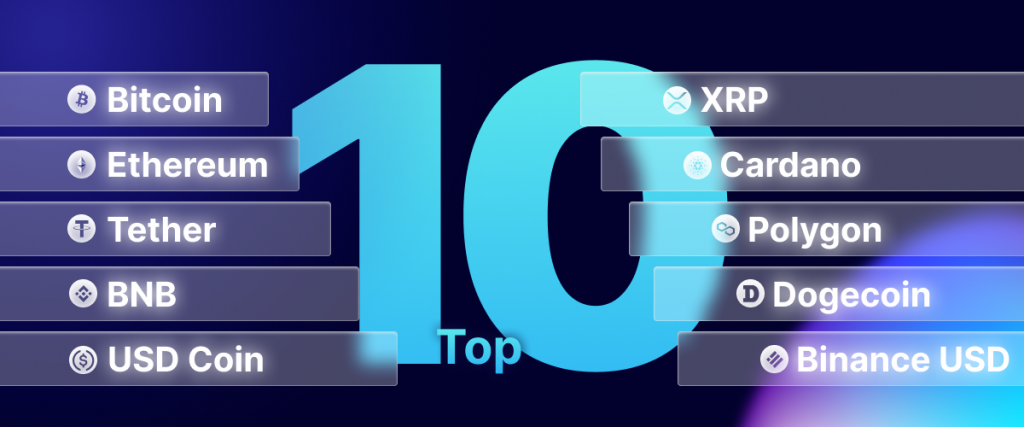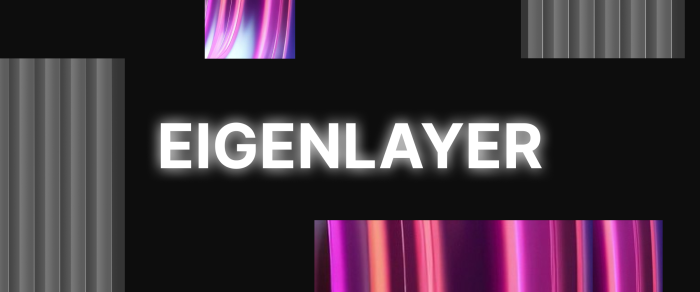Cryptocurrency Slangs For Beginners
The cryptocurrency world is still new, with a lot of niche-specific terminologies. Understanding all the slang, inside jokes, and acronyms used in the crypto community can be extremely overwhelming for new crypto enthusiasts.
While conducting your own research on Google is always helpful,but it can be time-consuming. Therefore, we have gathered a glossary of all the essential terms in the crypto space to help you get started.
Key Takeaways
- Crypto slang is informal language and acronyms used by cryptocurrency community members.
- Crypto slang helps beginners communicate and navigate the community.
- “HODL,” “FOMO,” “moon,” “rekt,” and “whale” are all common crypto slang.
40 Crypto Slang You Should Know

Crypto slang is the colloquial language, acronyms, and expressions that members of the crypto industry use to communicate with one another. Like members of any other subculture, crypto enthusiasts have coined their own lingo to describe various topics, pursuits, and practices surrounding blockchain technology and cryptocurrencies. So, let’s get started.
- FOMO/FOLE
The acronym “FOMO” stands for “fear of missing out.” It’s a common emotional state for crypto investors to experience when they’re sitting on the sidelines during a significant market shift while their peers reap the rewards.
When this happens in the cryptocurrency market, it usually means that a sharp bullish breakout has just occurred, and investors are debating whether or not to buy into the already expensive market in the hopes of riding the wave to the finish line.
The opposite of FOMO is FOLE, “fear of losing everything”, and it rushes people into selling when the coin price fall is coming since they feel that it will crash to the bottom.
- HODL
Another popular slang you’ll often hear in the crypto world is HODL. The acronym HODL, which stands for “hold on for dear life,” was a typo of “hold,” which has persisted and now means “keep.” It alludes to a buy-and-hold approach. As a result, a crypto trader who purchases a coin with no immediate intention of selling it is referred to be a “hodler” of the currency.
The term was coined in late 2013 on a Bitcoin forum during a moment of market turmoil when an unnerved investor raged about how others are unsuited to trade highs and lows and should instead just buy and hold in their own crypto wallet.
- Whale
The term “Crypto Whale” refers to large investors who can influence the price of cryptocurrencies by buying or selling all at once.
They often hold a large portion of the coin, which can lead to issues such as low liquidity and wild price fluctuations for smaller investors.

- Pump and Dump
The term “pump and dump” isn’t unique to the cryptocurrency market; it’s often used to describe the manipulation of stock prices. The term refers to the practice of investors artificially creating price swings for a coin, pumping it up, and then selling their holdings before the price declines again to make a quick profit.
- Bag Holders
A bag holder is a crypto trader who is holding onto a particular cryptocurrency despite its falling value. When the value of an asset plummets to near zero, bag holders choose to ride it out in the vain belief that it would miraculously recover.
- Sats
“Sats” stands for Satoshis, the tiniest Bitcoin unit (BTC). One Satoshi (sat) equals 0.00000001 Bitcoin (one hundred millionth of a Bitcoin). This unit’s name is inspired by Satoshi Nakamoto, the founder of the Bitcoin network.
- WAGMI/NGMI
WAGMI stands for ‘we’re all going to make it.’ In the crypto industry, it is frequently used to provide optimism and increase motivation.
On the other hand, NGMI stands for ‘not going to make it.’ It means you believe you made a poor choice and your investment will fail.
Both of these names are used in the crypto industry but are more prevalent in the NFT community, particularly on Twitter and Discord groups.
- Diamond Hands/Paper hands
Like HODL, diamond hands allude to holding crypto despite intense selling pressure.
On the other hand, paper hands are investors that sell their holdings too soon, typically out of panic and fear of loss.
- Weak Hands
The investors that lose hope and sell their coins when the price drops or decreases, even little, are referred to as “weak hands” in the cryptocurrency community. Someone with strong hands, on the opposite, might hold on to their coins in the hope of price appreciation.
- Buy The Dip (BTD)
Purchasing an asset after its price has plummeted is known as “buying the dip” or “BTD.” It’s based on the same logic as when you persuade yourself to buy something because it’s on sale at the mall.
So, when people say they’re “buying the dip,” they’re referring to the practice of purchasing a crypto asset at a lower price in the expectation that the cryptocurrency’s value would eventually rise again.
- When Lambo?
As a signal of their success in the market, several early Bitcoin investors splashed out on flashy Lamborghinis. As a result, Lamborghinis came to represent cryptocurrency success. Many in the community now ask, “When Lambo?” to determine when a crypto investment will be profitable enough to buy a Lamborghini.

- Flippening
Market capitalization is a standard metric used to rank cryptocurrencies. One cryptocurrency “flips” the next when its market cap causes it to rise in the rankings. This “flippening” refers to the possibility that Ethereum, the second most popular coin, would overtake Bitcoin as the largest crypto by total market cap.
- Ape
The term “ape” or “apeing” is commonly used in the non-fungible token (NFT) community to describe the practice of purchasing an NFT or token quickly after its release without first performing adequate research.
- Cryptojacking
Cybercrime, known as “cryptojacking,” occurs when malicious software is installed on a victim’s computer to steal processing power and covertly mine cryptocurrencies. It’s a phoney take on cloud mining in which users can profit from mining without purchasing equipment or paying for the electricity to keep it operating.
- DYOR
Before investing in a digital currency, you should Do Your Own Research (DYOR) and ensure you know where your money is going. Someone may recommend a new token they find exciting but caution you to DYOR.
- GM
“GM” simply stands for “Good Morning.” In the crypto world, it is used to spread good vibes, say hello, and forge connections. Those who use Twitter frequently begin their days with a Good Morning tweet, and their followers often respond with a GM tweet of their own.

- Normie
Those who continue to think conventionally and have chosen to avoid the crypto market are referred to as “normies” by crypto investors. Typically, these normies have little to no understanding of cryptocurrencies.
- Rug, AKA Rug Pull
A rug pull is a form of crypto fraud in which the development team stops working on a project before it is finished, taking a huge amount of funders’ money and leaving them with a currency that has no value. Its name comes from the idiom “pulling the rug out from under someone.” Scam victims often report feeling that they “got rugged.”
- Halving
In the context of cryptocurrencies, halving is a mechanism that lowers the rate at which new coins are issued. More specifically, halving refers to the periodic reduction of the block subsidy paid to miners. The halving assures that a crypto asset’s issuance rate will remain constant until its maximum supply is reached.
For example, BTC halving occurs every four years, and the current Bitcoin mining reward for new blocks is 6.25 BTC.
- Seed Phrase
The seed phrase is the term used to describe the private key of a cryptocurrency wallet. When creating a wallet, you should take extra precautions to safeguard the seed phrase. The private key lets you send the digital currency stored in the crypto wallet. If you misplace it, you could throw away the money.
- Rekt
Rekt, an intended misspelling of the word “wrecked,” is a crypto slang term used to denote an investor’s portfolio or investment suffering a crushing setback. It is being utilized in the headlines on social media to warn of significant financial losses due to the liquidation of overleveraged assets.
- Going To The Moon/Mooning
The term “going to the moon” or “mooning” is used to characterize a cryptocurrency expected to have a sharp upward trend in the market. When the price of a specific cryptocurrency is mooning, it signifies that it is surging so rapidly that it is figuratively ascending to the moon. This event can be utilized by investors looking to discover the optimal timing to sell their cryptocurrencies to obtain the highest interest. For example, you might have frequently heard the phrase “DOGE to the moon” during the Dogecoin craze.

- FUD
The acronym FUD stands for “fear, uncertainty, and doubt.” FUD, as it is commonly referred to in the cryptocurrency community, is a psychological technique that aims to instill negative news about a particular asset to discourage further investment or even prompt selling or short-selling.
The goal of spreading fear, uncertainty, and doubt among crypto traders is to reduce the value of an asset so that the FUDer can acquire it at a lower price or cause harm to other token holders for what may be a competing crypto project.
- Shill
Shilling is the practice of promoting cryptocurrency for one’s own gain. Although the term wasn’t formulated in crypto, it quickly gained popularity there.
Shilling usually refers to the buyers who have invested in a cryptocurrency that isn’t performing as well as hoped and are trying to convince others to buy it so that the coin’s price will rise. Everything is done for one’s own benefit.
- DUST
The term “DUST” describes the insufficient quantity of cryptocurrency effectively trapped in a wallet. If your holdings are below the minimum of crypto exchange, you will be unable to swap them. The dust might not even be worth what you’d have to pay to transfer or use it.
- No-Coiner
A “no-coiner”,again, is a person who doesn’t believe in cryptocurrency or thinks it will eventually fail. Therefore, they don’t hold any coins themselves.
- Vaporware
Vaporware is a term used to describe any unfinished software project, including cryptocurrency. It’s typically promoted and hyped to the point where everyone talks about it, but it never gets done.
- Cryptosis
The term “cryptosis” describes an insatiable appetite for information about cryptocurrencies. Indicators of this ‘disease’ include excessive forum searching and constant conversations about cryptocurrencies with friends, usually accompanied by the temptation of purchasing altcoins (alternative coins).
- Bitcoin Maximalist
Bitcoin Maximalists, as its name implies, believe that Bitcoin is the sole cryptocurrency of value and the only digital asset worthy of support. The maximalist typically views the other coins as worthless and pointless or as “shitcoins.”
- Shitcoin
Shitcoin is a moniker for an alternative cryptocurrency with no useful application or intrinsic value. Shitcoins, as previously indicated, are frequently used by Bitcoin Maximalists to refer to all or nearly all alternative coins.
- Fork
Forks are updates to blockchain protocols. A fork occurs when a community modifies the blockchain’s protocol or fundamental set of rules.
There are two types of forks:
- Soft Fork – a blockchain software update that adds new features and upgrades.
- Hard Fork – a code change, so the new version is no longer compatible with earlier blocks. The blockchain, in this case, splits in two, one following the old rules and the other the new ones.
- ICO
An initial coin offering (ICO) is a crowdfunding campaign cryptocurrency projects use to raise capital. The project developers will present the concept and the team behind it and request funding to construct it.
They’ll give out new tokens as a reward. Some of these tokens may have practical uses within the project, while others will represent ownership in the business.
- Market Cap
The market capitalization of a cryptocurrency (you might also hear total market cap) is calculated by multiplying its current price by the total number of coins (the circulating supply). The larger a cryptocurrency’s market cap, the more dominant it is thought to be. Because of this, market capitalization is frequently considered to be the most crucial factor when evaluating cryptocurrencies.

- DAO
The DeFi project’s operational model is commonly referred to as a DAO or decentralized autonomous organization. It means that the organization is run by its shareholders, has a clear set of rules written into a computer program, and operates without a central government.
- DApps
DApps, “decentralized applications,” are similar to traditional apps but adopt decentralized finance technology and are not controlled by a single entity. It operates and stores data using blockchain technology.
The interface may look the same to the average user, but the underlying code may remain different. They are also governed by smart contracts, and user approval is required for any changes to the application protocols.
- KYC
KYC for crypto is a series of actions a crypto exchange takes during onboarding to verify customer identity, do due diligence, and limit fraudulent activities. This is an essential step toward ensuring the safety of cryptocurrency transactions and from the exchange’s side, it includes, but is not limited to, scanning a passport, providing proof of address, and verifying identity via a webcam.
The expression “KYC’d team” is also used in crypto space. This indicates that the project developers have supplied their personal information to the auditing firms, gone through Know Your Customer checks, and are now free to move forward with their activities. The team’s KYC badge demonstrates their trustworthiness even if they choose to maintain their anonymity.
- Doxxing
Doxxing is publishing someone’s private information, such as their name, home address, place of employment, phone number, bank account details, and other sensitive data, online without the victim’s permission.
This word first arose in the 1990s, when the hacker community held online anonymity in high esteem and was well respected. There, doxxing was perceived as a negative mechanism. However, the term has a lot more positive meaning in the crypto community. In contrast to a KYC’ed team, a “Doxxed” team reveals the identity of its members and increases investors’ trust.
- Bullish/Bearish
Bullish and bearish both refer to market patterns. They were first used primarily on conventional stock markets, but they have now found their way into the world of cryptocurrencies.
Price movements in a bullish market tend to go up, while in a bearish market, price drops.
- ATH
ATH, which stands for “All Time High,” indicates that the cryptocurrency is trading at its greatest price ever. For instance, in November 2021, Bitcoin’s value surpassed $65,000 per coin, marking a new all-time high.
- Airdrop
The term “airdrop” refers to a method of giving away cryptocurrency to a large number of people at once. New ICOs may airdrop and distribute their coins for free to increase exposure and interest. Before they send the token to your crypto wallet, some may ask you to accomplish particular activities, such as spreading the word about the project on social media.
The Bottom Line
The crypto industry is a dynamic and ever-changing field with its own language, and anyone thinking about making an investment or getting involved should be familiar with the vocabulary and words used in the industry.
From well-known expressions such as HODL and FOMO to more specialized terms like Moon and Shill, learning these terminologies can help individuals comfortably navigate in the world of cryptocurrencies.



